Key takeaways:
- Guest satisfaction surveys provide essential feedback that can reveal insights into attendee experiences and help improve future events.
- Effective surveys should have clear questions, a mix of quantitative and qualitative formats, and be sent promptly after the event to capture fresh impressions.
- Analyzing feedback deeply, including looking for emotional responses and demographic trends, can uncover valuable insights for event planning.
- Improving guest satisfaction often involves small, thoughtful gestures, personalized communication, and engaging attendees through interactive elements during events.
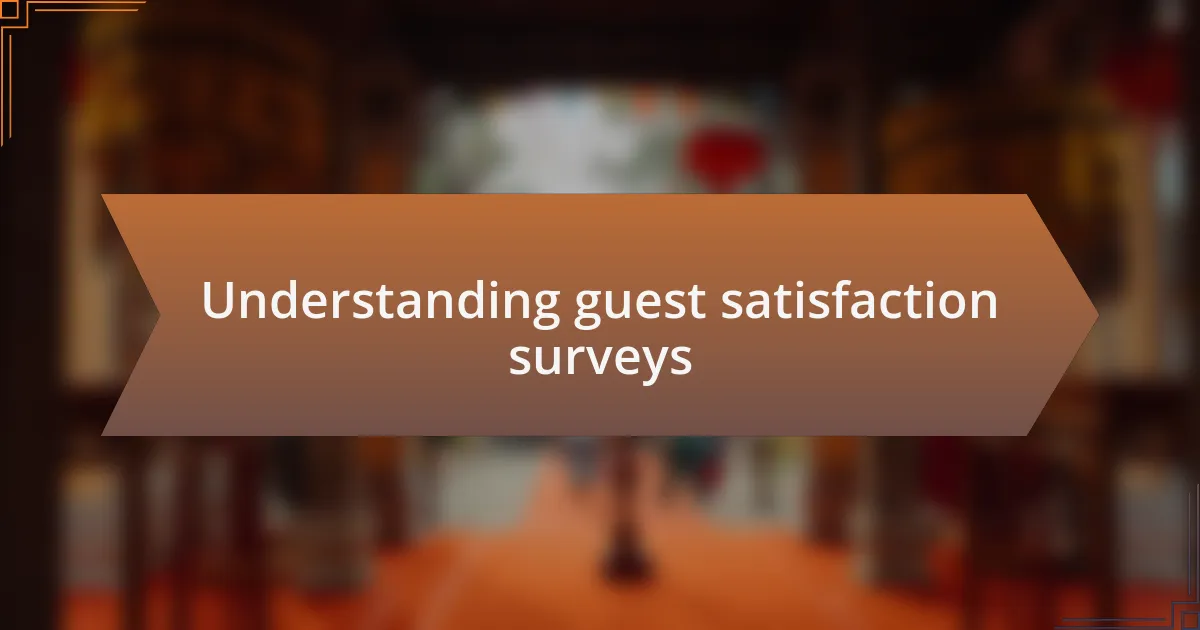
Understanding guest satisfaction surveys
Guest satisfaction surveys are essential tools for capturing valuable feedback from event attendees. Reflecting on my experiences, I remember a time when a simple survey revealed that our guests felt overwhelmed by the registration process. This insight prompted us to streamline that aspect in future events, resulting in smoother experiences for everyone involved.
These surveys not only provide numerical data but also unearth deeper emotions and perceptions. Have you ever wondered why some events leave a lasting impression while others fade away? Often, it boils down to the little details that attendees notice, and understanding these through surveys can be the key to creating memorable experiences.
Engaging with guest feedback through surveys helps improve future events significantly. I once overlooked certain amenities that participants considered essential, thinking they weren’t necessary. However, feedback from a survey highlighted these oversights, showing me how vital it is to listen to our guests and adjust accordingly.
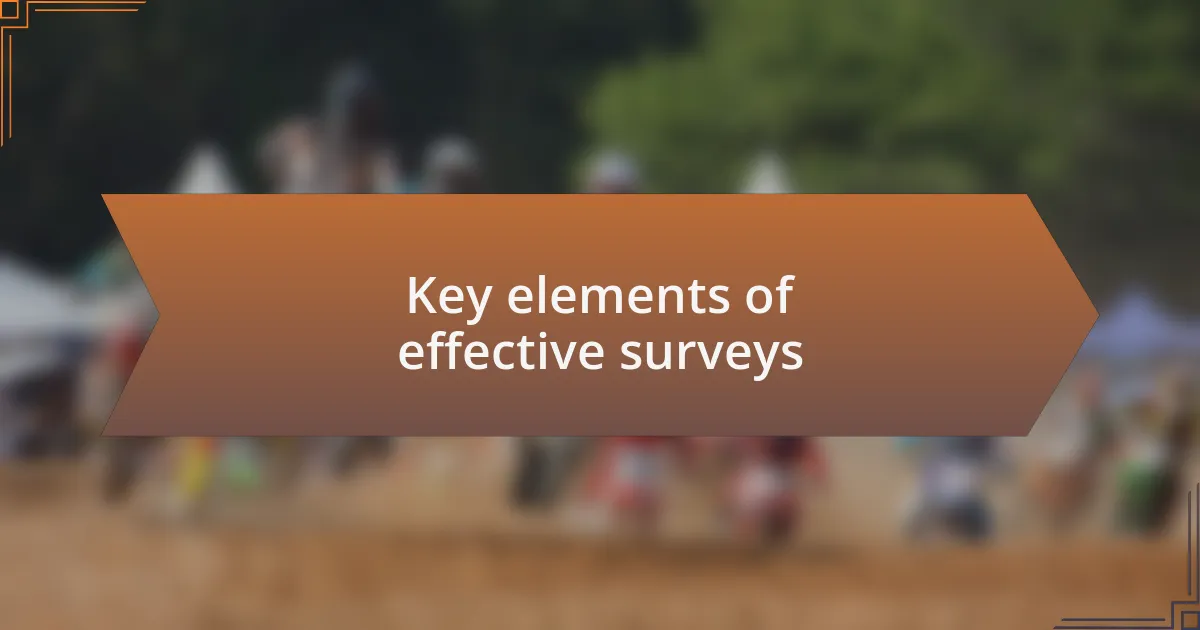
Key elements of effective surveys
Effective surveys embody clarity, purpose, and engagement. In one instance, I crafted a survey with straightforward questions, ensuring attendees could breeze through it without second-guessing what was being asked. The result? A higher response rate and richer insights. I realized that when questions are clear, guests are more likely to provide thoughtful feedback.
Incorporating both quantitative and qualitative questions can enhance the depth of the data collected. I often mix multiple-choice questions with open-ended ones, allowing attendees to express their feelings freely. For example, after a recent conference, I added a question asking participants about their most enjoyable moment. The stories shared in response not only surprised me but also gave me valuable themes to incorporate into future events.
Timing and methodology are also critical. Sending a post-event survey within 24 hours keeps the experience fresh in attendees’ minds. I once delayed sending a survey by a week, only to find that the feedback was less insightful. It was a wake-up call to understand that capturing feedback while the experience is still vivid makes a world of difference in the quality of responses.
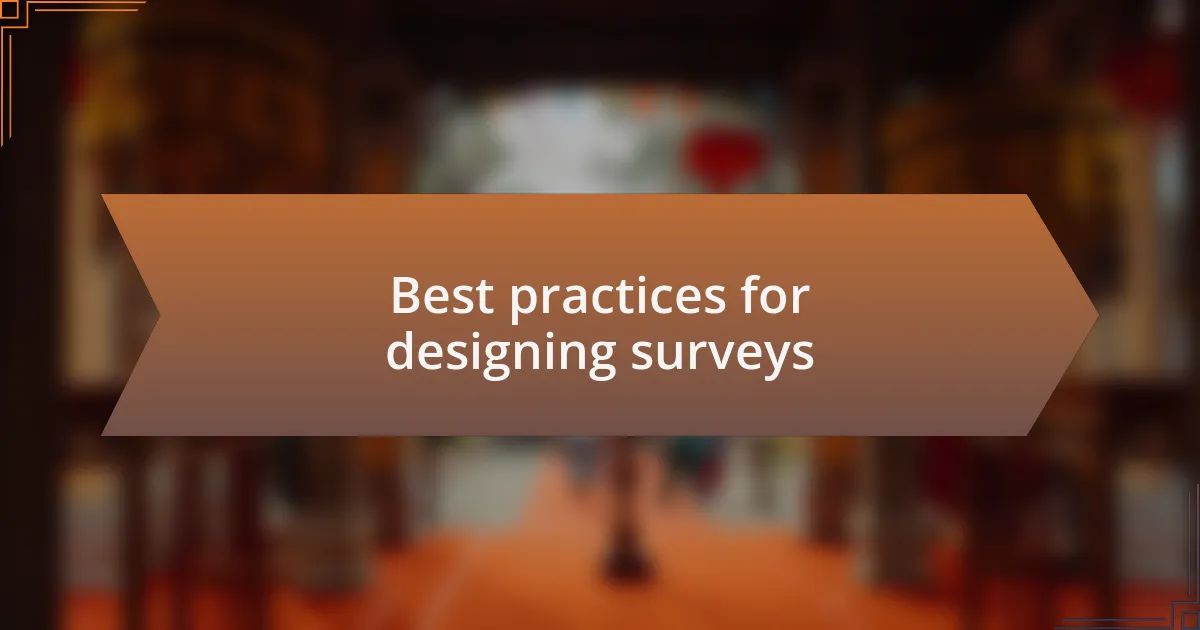
Best practices for designing surveys
Creating effective surveys requires an understanding of your audience and their preferences. One of my best experiences was when I focused on the length of the survey. I once designed a concise survey that took no longer than five minutes to complete. This approach honored the participants’ time and led to an impressive completion rate. Have you considered how brevity can impact your survey results?
Additionally, the order of questions can influence the feedback you receive. I’ve learned firsthand that starting with lighter, easier questions puts guests at ease before delving into more in-depth topics. On one occasion, I rearranged a survey based on this strategy and noticed a significant increase in the quality of responses, especially on sensitive subjects. What do you think happens when people feel comfortable sharing their thoughts?
Lastly, utilizing a clear and inviting design can significantly enhance survey participation. I remember implementing a visually appealing layout that aligned with the event’s branding. People responded more positively to the survey, as they felt it was an extension of the experience they enjoyed. Isn’t it amazing how aesthetics can impact engagement?
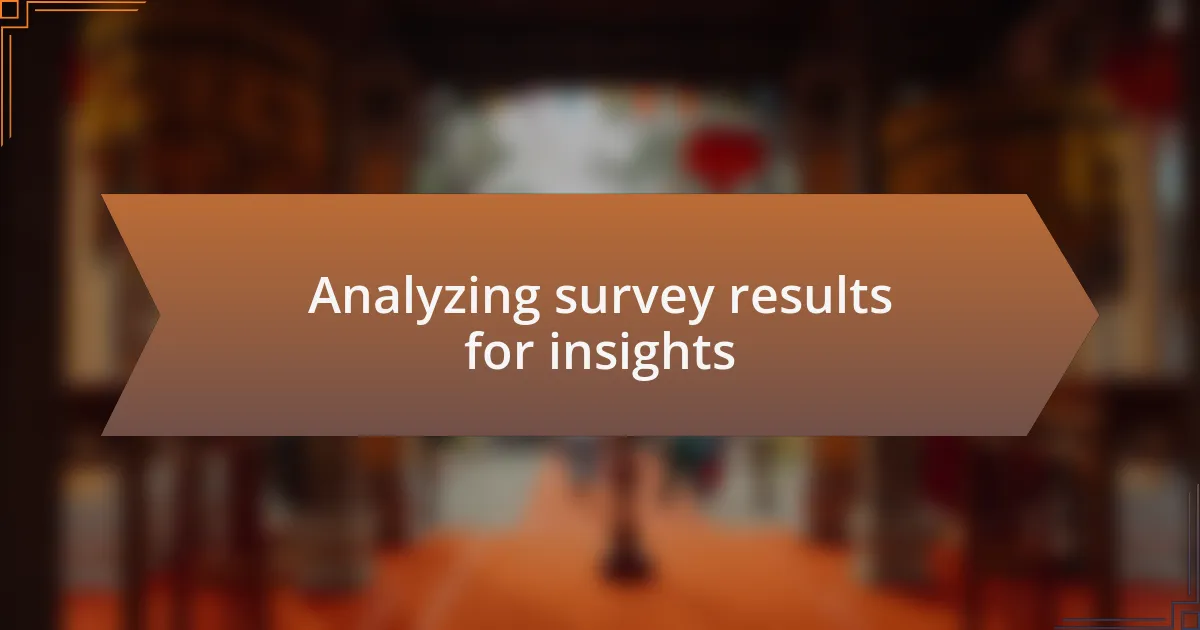
Analyzing survey results for insights
When analyzing survey results, it’s essential to delve deep into the data instead of just skimming the surface. I remember when I meticulously reviewed feedback from a recent event, looking beyond mere satisfaction scores. This approach revealed patterns in guest behavior that even the numbers seemed to mask. Have you ever noticed how a simple comment can highlight a larger trend?
Using segmentation can also provide a clearer picture of guest satisfaction. I once divided responses by demographic categories—like age and attendance frequency—and found that younger guests valued networking opportunities significantly more than older attendees. This differentiation provided actionable insights that helped tailor future events. Isn’t it fascinating how different perspectives can guide your planning?
Another effective method is to look for open-ended responses that exhibit strong emotions. During an event evaluation, I stumbled upon a heartfelt comment about how much a particular speaker resonated with one attendee. This insight emphasized the importance of content selection for future events. How often do we overlook those small, but telling, comments that could enhance our understanding of what guests truly value?
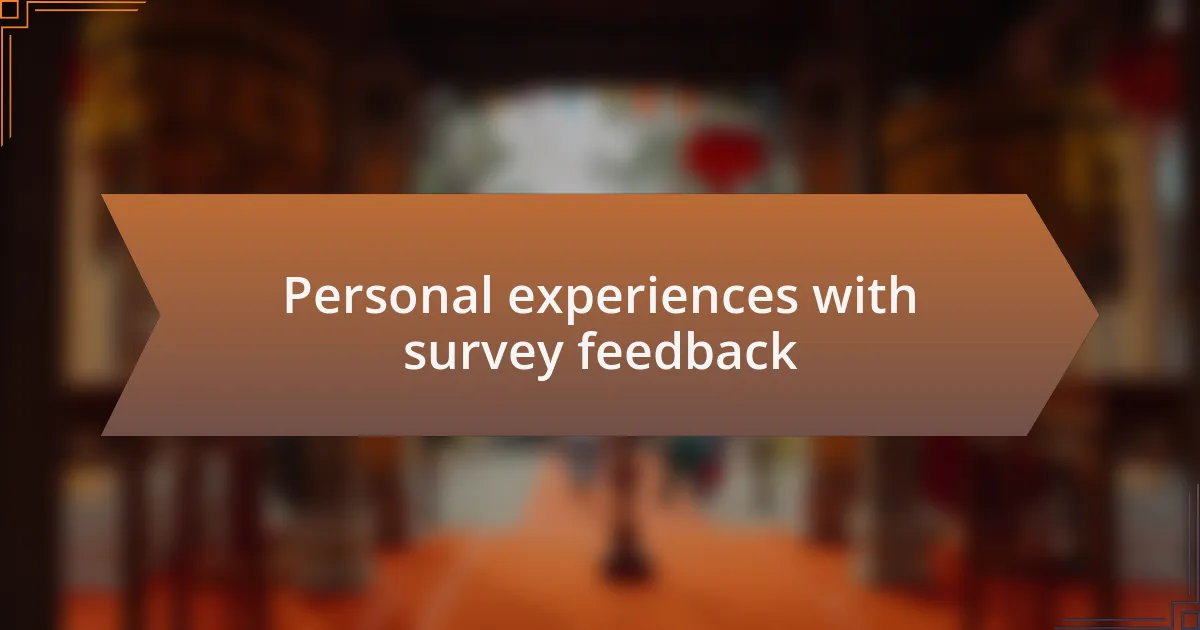
Personal experiences with survey feedback
Feedback from surveys can be a treasure trove of insights, especially when you encounter those unexpected gems. I recall one event where the feedback highlighted a guest’s struggle with navigation through the venue. Initially, the focus was on overall satisfaction scores, but that one comment shifted my perspective. It made me realize how even the best-planned events have room for improvement, reminding me that little inconveniences can leave a lasting impression.
I’ve found that direct feedback often leads to personal connections with attendees. For instance, after requesting input on speakers, I received an enthusiastic email from a guest who felt inspired by one particular session. Their excitement reinforced the critical role that engaging content plays in event success. How many times do we underestimate the impact of a single voice among the crowd?
Sometimes, it’s the repetitive themes in survey responses that stir a deeper emotional reaction. During a series of events, feedback consistently pointed out the warmth of our staff’s approach. This positive sentiment not only boosted morale within my team but also reminded me how crucial human interaction is in creating memorable experiences. Have you experienced a moment at an event that was less about the agenda and more about the people? Those are the moments that resonate.

Recommendations for improving guest satisfaction
Improving guest satisfaction is often about the details. I remember a time when we implemented a simple welcome package for our attendees, filled with local treats and event information. The feedback was overwhelmingly positive, and guests often mentioned how this small gesture made them feel valued right from the start. Have you considered how a thoughtful touch like this could enhance your events?
Another effective strategy I’ve found is personalizing communication before and after the event. After one event, I sent out personalized thank-you notes, and many guests responded with how much they appreciated the gesture. It fostered a sense of community and made them feel more connected to the event. Isn’t it interesting how such a seemingly small act can significantly influence overall satisfaction?
Lastly, engaging guests through interactive elements during the event can create lasting memories. At one of my recent events, I introduced live polls during sessions, and the results were astonishing. Guests loved being a part of the discussion, which not only increased their engagement but also enriched the overall experience. Have you ever tried interactive elements at your events? It might just be the key to elevating guest satisfaction.